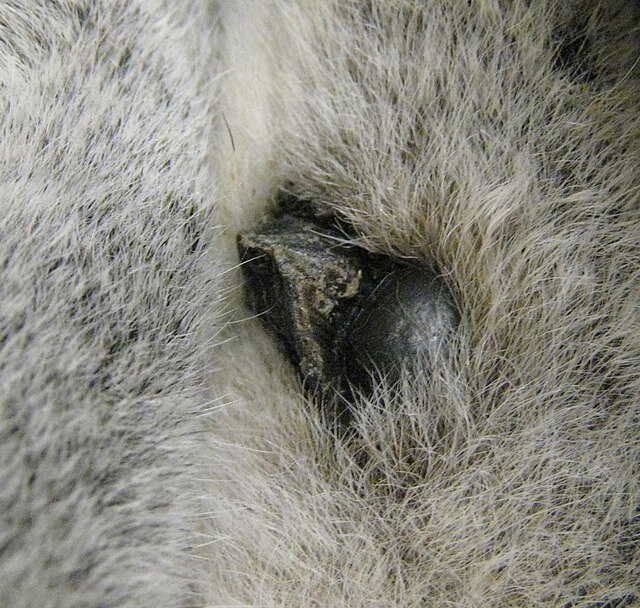Scent gland are exocrine glands found in most mammals. They produce semi-viscous secretions which contain pheromones and other semiochemical compounds. These odor-messengers indicate information such as status, territorial marking, mood, and sexual behaviour. The odor may be subliminal—not consciously detectable. Though it is not their primary function, the salivary glands may also function as scent glands in some animals.
The arrow is pointing to the metatarsal gland of a Sika deer
In ethology, territory is the sociographical area that an animal consistently defends against conspecific competition using agonistic behaviors or real physical aggression. Animals that actively defend territories in this way are referred to as being territorial or displaying territorialism.
Ring-tailed lemurs hold their distinctive tails high in the air during territorial scent marking. They also engage in "stink fights" with intruding males.
The antebrachial scent gland and spur on the forearm of a male ring-tailed lemur
Two domestic cats posturing during ritualized aggression over a territory
A western marsh harrier is mobbed by a northern lapwing. The marsh harrier, a male, had been quartering the ground in which lapwing and redshank were nesting.





